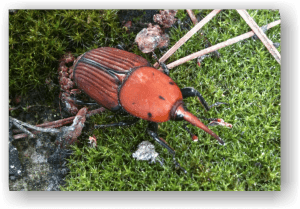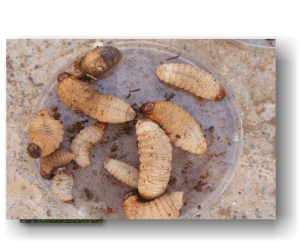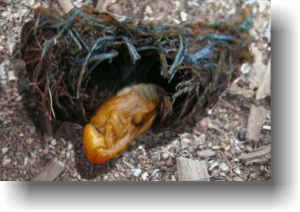|
Palm cultivation is of great economic and socio-cultural significance for the North Africa and Middle East countries while in south European countries, palm trees are cultivated mainly for ornamental purpose and are of great importance for the tourist industry.
Of all the pest infesting palm trees including the coconut palm, date palm and oil palm, the red palm weevil is the number one enemy world-wide.

Rhynchophorus ferrugineus adults are relatively large (2-5 cm) and rusty red in color
|
The female lays approximately 200 eggs on new growth in the crown of the palm, at the base of young leaves, or in open lesions on the plant.

The egg hatches into a white legless larva which feeds on the soft fibers, tunneling through the internal tissue of the tree.

At pupation, the larva will leave the tree and form a cocoon built of dry palm fibers at the base of the tree. The total life cycle takes 7–10 weeks. |




